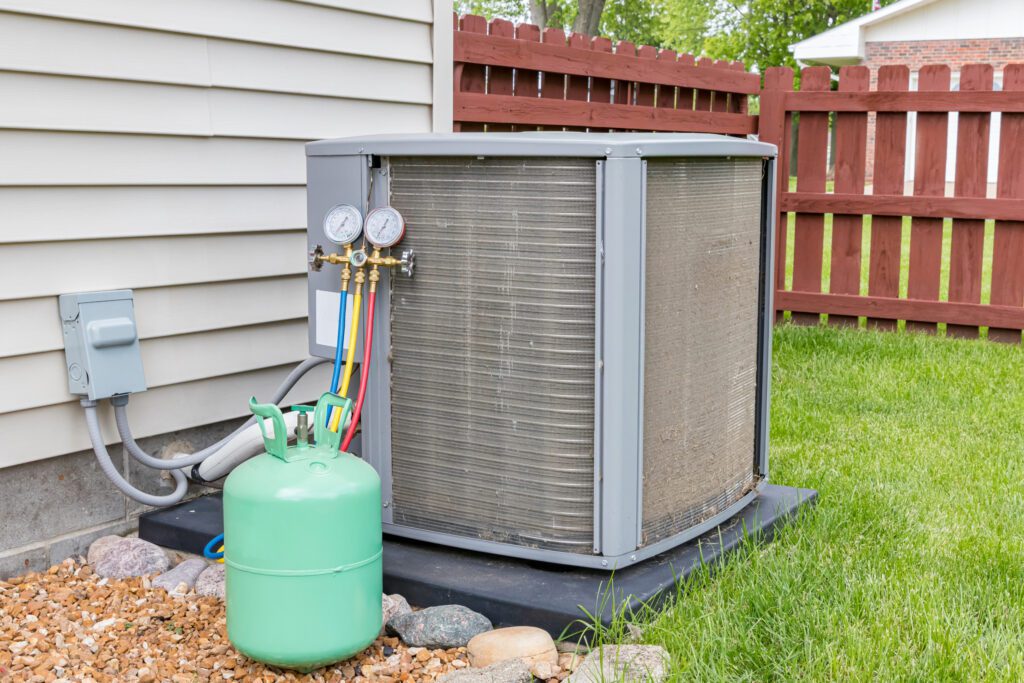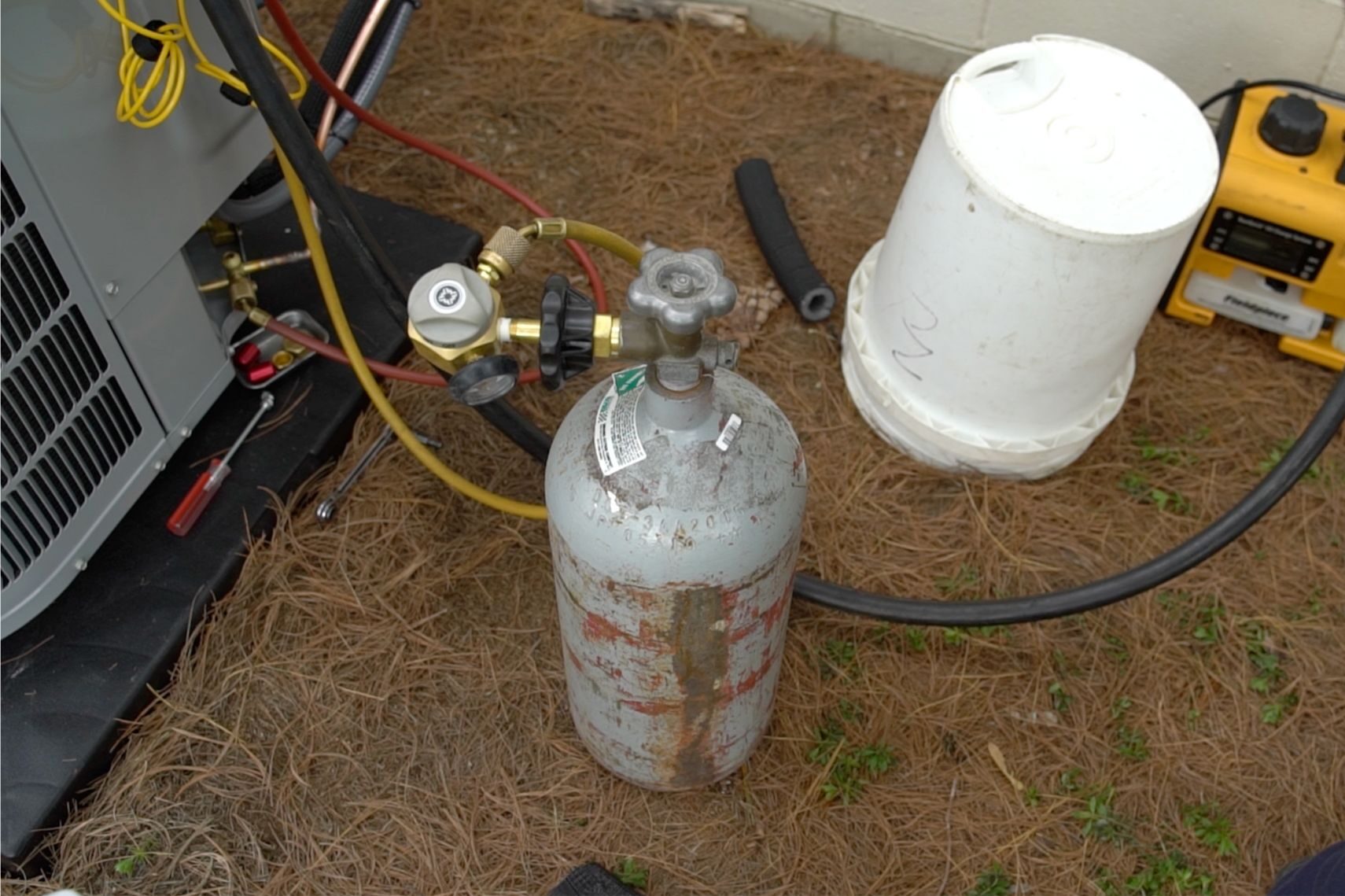The HVAC industry has been undergoing substantial transformations, especially concerning refrigerants. As such, we believe that it is essential for homeowners to stay informed about these changes to make educated choices regarding their HVAC systems. Whether you’re upgrading your existing setup or maintaining your current one, understanding the latest refrigerant advancements is key.
The Role of Refrigerants in HVAC Systems
Refrigerants are crucial in air conditioning and refrigeration systems as they absorb heat and provide cooling through evaporation. However, older refrigerants have posed environmental risks, leading to the phasing out of certain chemicals and the adoption of more sustainable options.

R-22 Phase-Out Overview
A significant recent transition is the phase-out of R-22, commonly used in older AC systems. Since January 1, 2020, the production and import of R-22 have been banned in the U.S., prompting a shift towards eco-friendlier alternatives. Those with systems using R-22 may face rising maintenance and refill costs due to its limited availability and increasing prices.
Embracing R-410A and New Alternatives
R-410A, known for being more environmentally conscious than previous refrigerants, has become standard in newer HVAC systems. It does not harm the ozone layer and is energy-efficient. Yet, the innovation in refrigerant tech continues.
Newer alternatives like R-32 and R-454B are gaining traction due to their reduced Global Warming Potential (GWP). These options present sustainable paths as the HVAC industry shifts toward greener solutions. R-32 stands out for its enhanced energy efficiency and minimal environmental impact.
What Homeowners Should Consider
1. Assessing Your Existing System – If your HVAC system operates on R-22, it’s wise to consider upgrading to models using R-410A or other eco-friendly refrigerants. While the initial cost of a new system might seem high, long-term savings on energy bills and maintenance—paired with environmental benefits—make it a sound investment.
2. Keeping Up with Regulatory Changes – As refrigerant regulations continue to change, staying informed is crucial. This knowledge aids not only in compliance but also in making eco-conscious choices.
3. Consulting HVAC Experts – If uncertain about the refrigerant in your system or contemplating an upgrade, consulting a certified HVAC professional is recommended. They offer insights into the most energy-efficient and environmentally friendly options that suit your needs.
The good news is that at Fairfield Heating & Cooling our technicians are NATE-certified as well as have extensive training and years of accumulated experience.
4. Focusing on Energy Efficiency – When installing or upgrading an HVAC system, prioritize energy efficiency. Modern systems using advanced refrigerants are typically more electricity-efficient, leading to noticeable utility bill savings over time.
How to Check Your HVAC System’s Refrigerant Levels
Your HVAC system requires the right amount of refrigerant to function efficiently. If levels are too low, you may experience weak cooling, higher energy bills, or even potential system damage.
As a homeowner, recognizing the signs of low refrigerant can help prevent costly repairs. Here’s how to check your system and what steps to take if you suspect a problem.
1. Watch for Signs of Low Refrigerant
If your air conditioner is blowing warmer air than usual, it could be a sign of low refrigerant. Other warning signs include your system running longer than normal, a sudden spike in your energy bills, or ice forming on the refrigerant lines.
Additionally, listen for hissing or unusual noises coming from your HVAC unit—these could indicate a refrigerant leak that needs immediate attention.
2. Check for a Refrigerant Sight Glass
Some HVAC systems include a sight glass near the refrigerant line, allowing for a quick visual check. If the liquid inside flows smoothly and appears clear, your system likely has an adequate refrigerant level. However, if you notice bubbles or foam, this could signal low refrigerant or a potential leak. If your system doesn’t have a sight glass, don’t worry—just proceed to the next step.
3. Call the Experts at Fairfield-Hamilton Heating & Cooling
We’ve got you covered! If your HVAC system is low on refrigerant, it’s crucial to have a licensed professional inspect it for leaks before refilling the system. Our experienced technicians have the tools and training to diagnose, repair, and safely recharge your refrigerant, ensuring your system runs efficiently.
Rest assured, we’ll take care of it quickly and professionally! Contact Fairfield-Hamilton Heating & Cooling today to schedule your service.

With the ongoing evolution of HVAC refrigerants, staying informed is vital for homeowners. Knowing which refrigerants are being phased out and which will become standard helps you make informed decisions about your home’s HVAC system. By focusing on energy efficiency and consulting professionals, you’ll maintain a comfortable, eco-friendly home.
For tailored advice and service, don’t hesitate to reach out to your local Fairfield-Hamilton Heating & Cooling experts. We are always ready to assist with all your HVAC needs, ensuring your home stays comfortable and environmentally responsible.
You can reach us at (513) 540-1716, or schedule an appointment online now by clicking here!
In the meantime, feel free to read our blog on how to stay cool while you wait for your technician to arrive.











